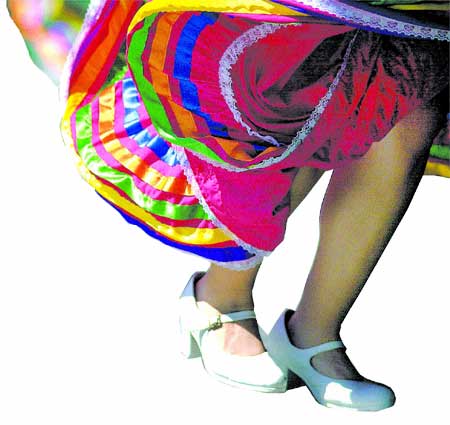It is a gray, wet afternoon as rain drips through the redwoods on the Mount Madonna School (MMS) campus. A group of 10th- and 11th-grade students are spotted bustling outside of their classroom, full of nerves and anticipation. Most are adorned in camouflage with black smudges of paint under their eyes. To the casual observer it might appear that these students are preparing for a theatrical production. In reality, this is the beginning of a reenactment of trench warfare and is the culmination of a unit examining World War I in teacher Amy Neff’s social studies course.
After the excitement slowly dissipates to a focus on the task at hand, Neff reviews the rules and logistics for the activity and supplies are assessed. For the past few weeks, 11th-grade students have been examining the role of the United States and general conditions during WWI. According to students Saniya Lakka and Sophia Saavedra, students have kept journals, read first-hand accounts from American soldiers and learned about the causes of WWI.
However, one activity students have been waiting for is trench-fighting simulation on the school campus. The 10th-grade students represented Germany after having gained introductory knowledge of this time period, which enriches their studies of the Revolutionary War, while 11th-graders represented the United States.
Although this lesson has only been part of MMS high school social studies since 2012, it has become something of school legend. Younger students eagerly await the time when they will participate and some have witnessed the event in previous years. It is difficult to imagine a typical history lesson garnering this much enthusiasm.
“It makes you feel like you’re actually there,” said 10th-grader Jacob Castillo.
This was Neff’s first year adopting the lesson from former MMS teacher Matt Meachen. Neff said she was hesitant to take the project on.
“I had concerns about how much work it would be, whether there would be injuries, students missing classes,” she said.
Ultimately, student interest trumped those initial concerns.
“They were really excited about the event continuing since the juniors participated last year as sophomores and the current sophomores heard about it from previous classes,” Neff said.
A group of approximately 30 students took a five-minute walk into the nearby redwoods where trenches had been made in previous years by volunteers. During the short walk, two 11th-grade girls sang the “Star Spangled Banner.”
Once students assembled at the site, Neff gave the troops 15 minutes to prepare their respective areas. Students immediately began to hustle, moving debris of large branches and leaves along with broken concrete in order to create the best defense possible. Both sides began discussing strategy. Students distributed “ammunition” of water balloons and squirt guns and then filed to their respective sides. With 11th-graders’ chants of “U-S-A! U-S-A!” the first round began.
If a water balloon hit a student, they were immediately out. If a target came within three feet of a soldier, they were also. However they could be saved by a medic, a role chosen by fellow classmates. Each student wore a flag football belt with two sashes that represented the soldier’s two lives and that could be taken by the opposing side. The United States won the first round.
Germany formulated a new game plan for the next round.
Neff tallied the number of fallen soldiers for each side and by the time the round is over, only a few students remained standing on either side. Despite its adversarial nature, students walked away with a positive feeling afterward. There were even cheers and congratulatory sentiments when Germany won a round.
“(Students) promised to help me get things ready and be active, positive participants,” Neff said, and added that student feedback was good. Many were even glad for the “rainy weather resulting in mud” that made for a more realistic simulation.
Students looked out for each other and were exposed to a lesson that they will most likely tell future students about.
64.9
F
Morgan Hill
February 24, 2025









